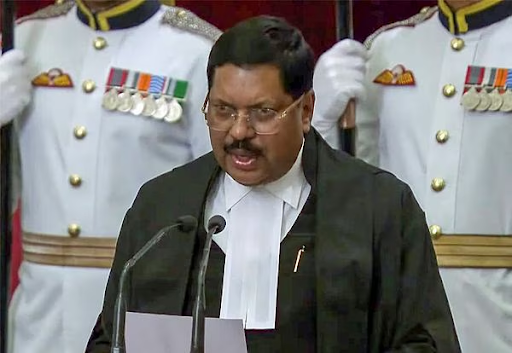Description
.png)
Disclaimer: Copyright infringement not intended.
Context
- Around Rs 79 crore has been transferred to ineligible beneficiaries under the Ministry of Rural Development’s National Social Assistance Programme (NSAP) between 2017 and 2021, an audit by the Comptroller and Auditor General of India (CAG) has revealed.
National Social Assistance Programme
About
- NSAP stands for National Social Assistance Programme. NSAP was launched on 15th August 1995.
Objective of NSAP
- National Social Assistance Programme is a social security and welfare programme to provide support to aged persons, widows, disabled persons and bereaved families on death of primary bread winner, belonging to below-poverty-line households.
Components of NSAP
The NSAP at its inception in 1995 had three components namely:
-
- National Old Age Pension Scheme (NOAPS,
- National Family Benefit Scheme (NFBS) and
- National Maternity Benefit Scheme (NMBS). The National Maternity Benefit Scheme (NMBS) was subsequently transferred on 1st April, 2001 from the Ministry of Rural Development to the Ministry of Health and Family Welfare.
- On 1st April, 2000 a new Scheme known as Annapurna Scheme was launched. This scheme aimed at providing food security to meet the requirement of those senior citizens who, though eligible, have remained uncovered under the NOAPS.
- In February 2009, two new Schemes known as Indira Gandhi National Widow Pension Scheme (IGNWPS) and Indira Gandhi National Disability Pension Scheme (IGNDPS) were introduced.
Presently NSAP comprises of five schemes, namely –
-
- Indira Gandhi National Old Age Pension Scheme (IGNOAPS),
- Indira Gandhi National Widow Pension Scheme (IGNWPS),
- Indira Gandhi National Disability Pension Scheme (IGNDPS),
- National Family Benefit Scheme NFBS) and
- Annapurna.

Eligibility and scale of assistance
- For getting benefits under NSAP the applicant must belong to a Below Poverty Line (BPL) family according to the criteria prescribed by the Govt. of India. The other eligibility criteria and the scale of central assistance under the sub-schemes of NSAP are as follows. Besides the central assistance, states / UT contribute an equal amount as their share:
Indira Gandhi National Old Age Pension Scheme (IGNOAPS)
- The eligible age for IGNOAPS is 60 years. The pension is Rs.200 p.m. for persons between 60 years and 79 years.
- For persons who are 80 years and above the pension is Rs.500/ - per month.
Indira Gandhi National Widow Pension Scheme (IGNWPS)
- The eligible age is 40 years and the pension is Rs.300 per month.
- After attaining the age of 80 years, the beneficiary will get Rs.500/ - per month.
Indira Gandhi National Disability Pension Scheme (IGNDPS)
- The eligible age for the pension er is 18 years and above and the disability level has to be 80%.
- The amount is Rs.300 per month and after attaining the age of 80 years, the beneficiary will get Rs 500/ - per month .
- Dwarfs will also be an eligible category for this pension.
National Family Benefit Scheme (NFBS):
- 20000/ - will be given as a lumpsum assistance to the bereaved household in the event of death of the bread - winner.
- It is clarified that any event of death (natural or otherwise) would make the family eligible for assistance.
- A woman in the family, who is a home maker, is also considered as a ‘bread - winner’ for this purpose.
- The family benefit will be paid to such surviving member of the household of the deceased poor, who after local inquiry, is found to be the head of the household.
- For the purpose of the scheme, the term “household’ would include spouse, minor children, unmarried daughters and dependent parents. In case of death of an unmarried adult, the term household would include minor brothers/ sisters and dependent parents.
- The death of such a breadwinner should have occurred whilst he/ she is more than 18 years of age and less than 60 years of age. The assistance would be given to every case of death of the breadwinner in a family.
Annapurna Scheme
- 10 kgs of food grains (wheat or rice) is given per month per beneficiary. The scheme aims at providing food security to meet the requirements of those eligible old aged persons who have remained uncovered under the IGNOAPS.
Significance of NSAP
- The National Social Assistance Programme (NSAP) represents a significant step towards the fulfilment of the Directive Principles in Articles 41 and 42 of the Constitution recognizing the concurrent responsibility of the Central and the State Governments in the matter.
- In particular, Article 41 of the Constitution of India directs the State to provide public assistance to its citizens in case of unemployment, old age, sickness and disablement and in other cases of undeserved want within the limit of its economic capacity and development.
|
PRACTICE QUESTION
Q. Consider the following statements:
1. Dwarfs are eligible under Indira Gandhi National Disability Pension Scheme (IGNDPS).
2. Under Annapurna Scheme 20 kgs of food grains (wheat or rice) is given per month per beneficiary.
3. Under the National Family Benefit Scheme (NFBS) Rs. 50000/ is given as a lump sum assistance to the bereaved household in the event of death of the breadwinner.
4. Under Indira Gandhi National Widow Pension Scheme (IGNWPS) eligible age is 60 years and the pension is Rs.300 per month.
How many of the above are correctly matched?
A) Only 1
B) Only 2
C) Only 3
D) All
Answer: A) Only 1
|

https://www.downtoearth.org.in/news/governance/rs-79-crore-transferred-to-ineligible-beneficiaries-under-nsap-finds-cag-91122




.png)
.png)








